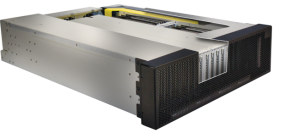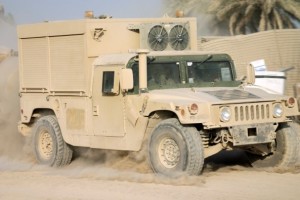Sponsored Post
Advancements in high performance computing (HPC) have begun to influence the way defense intelligence is gathered, stored and processed. Analysts who attempt to predict the changing landscape of the battlefield are overwhelmed by larger amounts of data due to increased numbers of sensors and a more sophisticated adversary. In addition, the information they receive is constantly changing, making it harder to anticipate what’s coming next. Technological advancements in hardware and software products allow analysts to process larger amounts of data rapidly, allowing them time to apply human judgment and experience to intelligence problems. This article examines a couple of the hardware advancements in HPC.
The introduction of graphical processing units (GPUs) and Flash memory changed the landscape of HPC. GPUs allow the processing of vast amounts of data more quickly. The more GPUs in a system, the more data can be processed. Conventional computers, however don’t usually have the capacity to support more than a few GPUs. No matter how sophisticated the computer, it usually has a limited number of slots for additional cards. The introduction of PCI Express to the motherboard a few years ago allowed the internal bus to operate over a cable without requiring software conversion. Therefore an enclosure with multiple slots can be attached to a conventional computer so it can access multiple GPUs as if they are in the system. As GPUs matured with increased performance, the bandwidth of the PCIe bus over cable simultaneously increased, allowing these high performance machines to operate at full capacity. The One Stop Systems High Density Compute Accelerator (HDCA) supporting up to sixteen GPUs, each with a 128Gb/s bandwidth can be attached to up to four computers with each GPU operating at full capacity.
As large amounts of data are processed quickly it must be stored quickly or produce a bottleneck in the system. Flash memory allows the storing and retrieval of data more quickly than with conventional rotating disk storage. For example, rotating disks store data at about 12ms while Flash storage, or silicon disks, store data at about .1ms. Today’s Flash memory devices include direct attachment to the PCIe bus at the rate of about 32Gb/s. Therefore data streams can be accumulated and stored directly without any conversion to a slower bus like SATA operating at 10Gb/s.
The more Flash memory devices, the greater amount of data can be stored. A SanDisk Fusion ioMemory™ SX600 card, for example, supports up to 6.4TB of data. The One Stop Systems Flash Storage Array (FSA) supports 200TB of storage using the ioMemory cards. The FSA is used in military mobile applications to get the storage system closer to the data collection points. The new OSS OCP (Open Compute Project) Flash Storage Array supports up to 244TB of data storage in 2U of rack space using the new M.2 Flash memory devices.

The Department of Defense is in the process of designing an automated intelligence program that will be implemented by every branch of the military. The program will collect, process, utilize, distribute and store a wide variety of intelligence data. The application of such technologic advancements as GPUs and Flash memory will definitely play a leading role in the deployment of this program. These components will allow computers to process data and produce scenarios and options to allow military personnel to see the bigger picture rather than getting bogged down by the individual pieces of intelligence. Such automation will allow the military to get accurate information on the battlefield, without putting people its own people at risk. It will also allow for better surveillance of targets to ensure more successful military operations.
This article was written by Mark Gunn, Senior Vice President, One Stop Systems.





